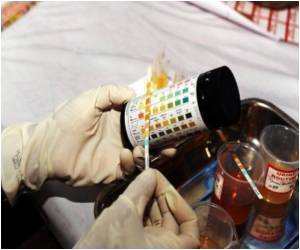
Gold nanoparticles, tiny pieces of gold so small that they can't be seen by the naked eye, are used in electronics, healthcare products and as pharmaceuticals to fight cancer.
Despite their positive uses, the process to make the nanoparticles requires dangerous and extremely toxic chemicals. While the nanotechnology industry is expected to produce large quantities of nanoparticles in the near future, researchers have been worried about the environmental impact of the global nanotechnological revolution.
Now, a study by a University of Missouri research team, led by MU scientist Kattesh Katti, curators' professor of radiology and physics in the School of Medicine and the College of Arts and Science, senior research scientist at the University of Missouri Research Reactor and director of the Cancer Nanotechnology Platform, has solved this problem.
The usual method of creating gold nanoparticles utilizes harmful chemicals and acids that are not environmentally safe and contain toxic impurities. In the MU study, Katti and researchers Raghuraman Kannan, the Michael J and Sharon R. Bukstein Distinguished Faculty Scholar in Cancer Research, assistant professor of radiology and director of the Nanoparticle Production Core Facility; and Nripen Chanda, a research associate scientist, mixed gold salts with cinnamon and stirred the mixture in water to synthesize gold nanoparticles. The new process uses no electricity and utilizes no toxic agents.
"The procedure we have developed is non-toxic," Kannan said. "No chemicals are used in the generation of gold nanoparticles, except gold salts. It is a true 'green' process."
Advertisement
role of Mother Nature in all future nanotechnological developments."
Advertisement
"Our gold nanoparticles are not only ecologically and biologically benign, they also are biologically active against cancer cells," Katti said.
The study was published in Pharmaceutical Research.
Source-ANI











